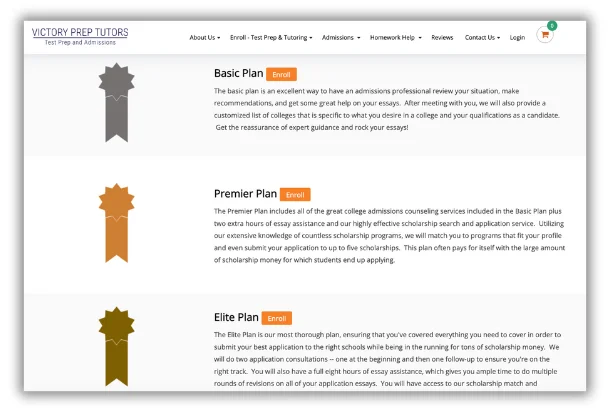Whether it’s in sports, a friendly personal rivalry, or Hollywood during awards season, competition keeps us on our toes—and perhaps on our A game.
The same is true in the business world.
To be truly competitive, you can’t leave your fate to chance. That’s where competitive analysis—the art of researching your competitors to glean insights for your own benefit—comes in.
Here are 10 competitive insights worth looking into—and how they help you stay ahead of the game.
Contents
- What to do before you collect competitive insights
- Why it’s important to collect competitive insights
- 10 competitive insights to collect (+how to use them)
What to do before you collect competitive insights
Potential data sources include analytics tools, as well as marketing campaigns, social media channels, customer feedback, industry reports, and even patent filings.
“The gathered information should be systematically reviewed and incorporated into your strategic planning,” said Victor Trasoff-Jilg, vice president of sales at Bombing Science.
“Regularly benchmarking your performance against competitors helps identify areas for improvement and innovation.”
Just make sure your data collection methods are legal/ethical to maintain brand integrity, cautioned Bonnie Ruan, chief product officer at Beska Mold.
🛑 Speaking of benchmarks… See how your Google Ads performance stacks up with our Search Ads Benchmarks Report.
Why it’s important to collect competitive insights
It’s worth taking the time to research competitors because, as Jason Sherman, CEO of Spinnr, put it, it’s “a bit like having a mentor in the business world.”
He added, “It’s not about copying them, but rather drawing inspiration and insights to refine our own strategies.”
That’s in part because competitive analysis helps you understand the overall marketplace better.
“By seeing what’s working for them and what isn’t, we can identify trends and emerging opportunities,” Sherman said. “It’s like getting a sneak peek into the future of our industry.”
In turn, you can hone your strategic planning efforts and ensure your products and/or services evolve alongside consumer needs and your brand messaging continues to resonate.
10 competitive insights to collect from your competitors
Now, let’s dive in to the 10 biggest things you can learn from your competitors and how to use them to improve your business.
1. How they price their products/services
By keeping tabs on competitors’ pricing models, you gain insights into what customers are willing to pay for similar products or services.
Your analysis may reveal a gap in the market if, say, you find customer complaints about cost. You could then develop a strategy that balances affordability with profitability.
“This could involve offering tiered pricing models that cater to different customer segments or providing discounts for long-term contracts,” said Laia Quintana, head of marketing and sales at TeamUp.

This SAT prep business offers a tiered pricing and plan structure.
From there, you can create a marketing plan that emphasizes the lower price point, added Caleb Leong, marketing manager at GBS Singapore.
Geoff Cudd, founder of Don’t Do It Yourself, noted this is also true on the other end of the spectrum, where you might be able to offer a premium service that justifies a higher price point.
Research into pricing can also reveal category-specific pain points, like a lack of transparency in the moving industry, added Nick Valentino, vice president of market operations at Bellhop. That allowed Bellhop to differentiate itself with a more transparent pricing model.
It’s also a good idea to monitor competitors’ sales events so you can keep pace—if not outdo—their discounts, especially during events like Black Friday.
“The good thing about this approach, aside from the immediate sales, is how it positions us as the best-value option in our customers’ minds,” said Ian Sells, CEO of Million Dollar Sellers.
🌱 Download our free, editable growth strategy template to walk through seven simple steps for creating the right plan to grow your business.
2. The features they are (or aren’t) offering
Competitors’ products and services in and of themselves can also reveal valuable insights.
For instance, understanding the features offered by competitors can possibly help identify gaps in the market for your own product to fill.
“Understanding customers’ pain points and competitors’ shortcomings allows businesses to tailor their products, services, or marketing efforts to provide unique solutions or experiences, gaining a competitive advantage and improving brand positioning,” said Connor Ondriska, CEO of SpanishVIP.

This lawn care company highlights speed as one of its features in multiple places on its site.
But it may also clarify the unique value propositions your products or services offer, which you can highlight in marketing messages.
“It also helps us to continuously innovate and improve our product to meet the evolving needs of our customers,” Quintana said.
Sherman agreed.
“Seeing [competitors’] innovations and product developments sparks our creativity and motivates us to raise the bar,” he said. “It’s like a friendly challenge to see who can come up with the next big thing.”
You can easily call out important distinctions in comparison tables on your website, said Elisa Montanari, head of organic growth at Wrike.
3. How their SEO performs
The SEO landscape offers a wealth of opportunities for competitive insight.
That runs the gamut from site traffic, keywords, and organic and paid rankings to link-building and content marketing opportunities. Tools like Ahrefs, Google Analytics, Moz, Similarweb, Semrush, and more can help provide specifics.

This report in Ahrefs shows top competing domains for a local bakery.
Once you’ve benchmarked the performance of your competitors, you can establish your own goals.
“We like to know what type of content and topics are working for our competitors and then seeing how we can iterate and make it better,” said Trish Manrique, marketing lead at Aditude.
Sometimes what your competitors don’t do can be just as revealing.
“None of our competitors buy paid ads from Google,” said Asel Mukambetova, founding attorney at the Law Office of Asel Mukambetova. “It means that paid traffic from Google does not bring the desired results, so we never even tried that path.”
📚 Free guide >> 20 Ways to Make Your Website More Visible on Google
4. The makeup of their content strategy
Keeping an eye on competitors’ content marketing efforts can prove inspirational to your own.
For starters, topics your competitors have covered could still hold value in your own blog posts, emails or other content types.
Plus, looking into what content ranks well in organic search can teach you about audience preferences and pain points.

“By analyzing the types of content that resonate with their target audience, businesses can refine their own content strategy and create more relevant and engaging content to attract organic traffic and improve brand visibility,” said Ross Kernez, director of SEO at Mavis.com.
Specifically, engagement rates, click-through rates, conversion rates, and overall reach are worth monitoring, said Simon Bacher, CEO of Ling.
The result? Ideas about trends, content gaps, and opportunities to optimize your own content.
“Sometimes I can see elements that are missing from their strategies, which then kickstarts my mind and gives me a fresh perspective on our own approach,” said Oliver Brandrup, director of SEO at Neurogan. “It can be humbling at times if I see things I might have missed, but it’s a really helpful way to reflect on what we’re doing.”
Analysis not only helps break through writer’s block, it yields more targeted and effective content.
“This not only helps in SEO but also positions us as a thought leader, drawing more organic traffic to our website and increasing engagement,” said Alari Aho, CEO of Toggl.
Another place to look for content intelligence is via industry reports, white papers, and case studies.
“These documents provide in-depth insights into their operational strategies and market performance,” Aho added. “By attending webinars and industry conferences, we gain further insights into thought leadership and strategic directions taken by our competitors.”
5. What their reviews look like
Don’t forget to check out customer reviews, which can also be a fount of wisdom about competing brands.
“This is a rich source of data that provides us with insights into what customers like or dislike about our competitors’ services,” said Ritesh Raj, COO and CPO of CuddlyNest. “It helps us understand their strengths and weaknesses.”

Analyzing this data can help pinpoint trends and patterns you can learn from—both the good and the bad.
“For example, if customers consistently praise a competitor for their user-friendly booking process, we know that this is an area we need to pay attention to,” Raj said.
On the other hand, if customers complain about user experience or difficulty finding information on a competitor’s website, you can ensure your UX is better and your information is easy to locate.
“This approach allows us to continuously improve our platform based on real customer needs and expectations, thereby enhancing customer satisfaction and loyalty,” Raj said.
Joost Hoek, director of Tedroka, agreed. “These reviews offer candid feedback that helps us refine our products, enhance customer experiences, and strengthen our market position,” Hoek said.
This information can also be found on social media platforms, where customers share their experiences with brands.
If you really want to take it up a notch, you can use natural language processing to quickly and easily identify common themes in customer feedback and respond accordingly. That’s according to Kayden Roberts, CMO of CamGo.
6. How consumers feel about them
In addition to seeking out information online, you can ask customers directly about their experiences.
For Tom Golubovich, head of marketing at Ninja Transfers, that means setting up a customer advisory board, which provides “an immediate temperature check on how well-received your competitor’s strategies are by the people you’re trying to serve.”
But you can also simply ask for feedback about customers’ experiences with other brands, which can help “gain valuable insights into where your competitors are excelling and where they may be falling short,” said Daniel Meursing, CEO of Premier Staff.
7. How they position themselves in marketing messages
Competitors’ advertising efforts can also yield insights, such as on market positioning.
For instance, how competing brands frame their products can help inform your own messaging to ensure it is unique and speaks to customers’ pain points, said Roman Zrazhevskiy, CEO of Mira Safety.

This auto repair shop mentions “affordable” prices throughout its website and marketing messages.
This helps your message not only resonate with the intended audience, but stand out in a crowded marketplace, added Raul Paul Mendoza, senior executive vice president of SAFC.
8. How they’re using social media
But don’t stop with what they say—also look at how and where they say it.
“What channels are they using? How are they positioning themselves?” Ruan said. “Use this information to refine your messaging and choose effective channels that may be underutilized by competitors, potentially giving you a greater share of voice.”
When it comes to digital advertising specifically, Mark Pierce, CEO of Wyoming LLC Attorney, recommends spending time in Facebook’s Ad Library.

“This library allows you to plunk in an ad category and search ads running across all Meta platforms, effectively understanding the creatives your competitors are running,” he said. “We like to look at what messaging and strategies they’re using so we can compare that with our own data, creatives, and ad performance.”
🚨 Get copy-and-paste social media posts ready for the whole year in our free social media template!
9. How they engage with influencers
For SNS Nails, competitive analysis means looking into competitors’ influencer partnerships. That’s in part because it provides a better picture of their target demographic, as well as any gaps in influencer outreach efforts.
“Understanding who our competitors are collaborating with provides a clearer picture of emerging trends and shifts within the market, allowing us to adapt our approaches to remain competitive and relevant,” said Anna Parvatova, brand manager and creative director at SNS Nails.
10. What they have on their website
Finally, a simple visit to a competitor’s website can also be helpful.
“We examine our competitors’ websites for creative and innovative ideas in design, UX, UI, graphics, copy, and features that we could adapt and improve upon,” said Hagop Imasdounian, managing partner of H&Co.

This dentist has a text option on their site that might make them more competitive.
Learn from your competitors to improve your business
A full competitive analysis along with a SWOT analysis can help you best understand your competitors. By collecting the right competitive insights, you can learn what your competitors are doing well and where you can stand out.
Here are 10 of the biggest competitive insights to collect from your competitors:
- How they price their products/services
- The features they are (or aren’t) offering
- How their SEO performs
- The makeup of their content strategy
- What their reviews look like
- How consumers feel about them
- How they position themselves in marketing messages
- How they’re using social media
- How they engage with influencers
- What they have on their website
Related Articles
-

How to Do a Marketing Audit in 6 Steps (+Template)
-

How to Delete a Google Review (+What to Do When You Can't)
-

Who Are My Competitors? 5 Steps to Find Them Fast
-

12 Types of Marketing Collateral Every Business Needs (+Examples!)
-

29 Crowd-Pleasing Grand Opening Ideas for Your Business (+Tips & Examples!)

